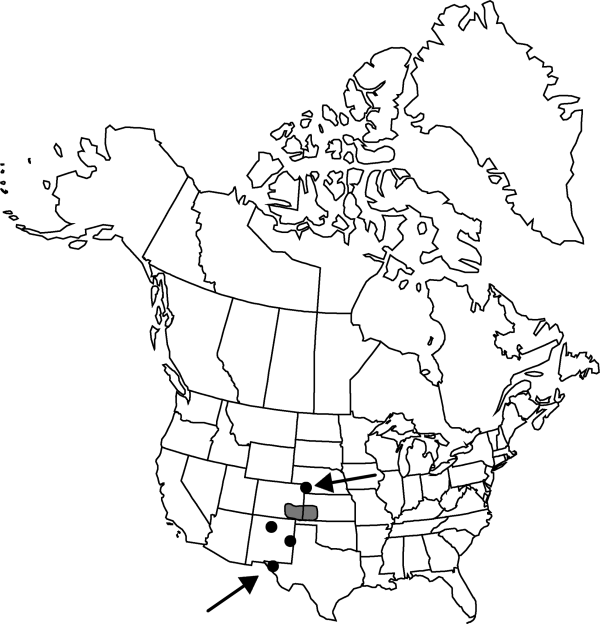Chenopodium cycloides
Bot. Gaz. 34: 363. 1902.
Stems erect, branched, 3–8 dm, glabrous to sparsely farinose; branches ascending. Leaves non-aromatic; petiole to 0.8 cm; blade linear, 1-veined, 1–3 × 0.1–0.2 cm, somewhat fleshy, base cuneate, margins entire, apex obtuse to acute, sparsely farinose abaxially, glabrous adaxially. Inflorescences glomerules in terminal and axillary panicles of interrupted spikes, 10–20 × 4–6 cm; glomerules widely spaced, maturing irregularly; bracts leaflike or reduced. Flowers: perianth segments (4–)5, connate into 0.5 mm tube; lobes broadly ovate, 0.7–0.8 × 0.7–1 mm, 1/2 or less width of connate portion, apex rounded or slightly emarginate, rounded abaxially, farinose, spreading and slightly accrescent and not covering fruit at maturity; stamens 5; stigmas 2, 0.2 mm. Achenes ovoid; pericarp adherent, red, minutely tuberculate. Seeds round, 1.3–1.5 mm diam., margins acute; seed coat black, rugulate.
Phenology: Fruiting early summer–fall.
Habitat: Open sandy areas especially around blowouts on sand dunes
Elevation: 800-1500 m
Distribution

Colo., Kans., Nebr., N.Mex., Tex.
Discussion
Selected References
None.
